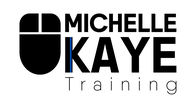If you haven’t guessed from the oh-so clever title, today’s blog is about Track Changes.
It’s something that I get asked about quite a bit; If it isn’t how to use it, it’s how to ‘clear’ the changes at the end.
What is track changes?
Let’s start at the beginning (which is a very good place to start).
You write a document, and share it with colleagues to ask for their thoughts and suggestions.
However, you want to know who suggested what:
- added text
- deletions and replacements
- questions asked
- comments made
- edits
That’s where the option comes in.
Editing the file – the changes appear on screen with who suggested it.
Comments aren’t technically part of this option, but used with it for questions/thoughts and ideas.
Remember – you can also use it when you’re editing your document.
What makes this a useful command, is that you can go back and review each change. As you look at each change, you select if you want to accept it or reject and go back to the original text.
Switching On
On the Ribbon – select the Review tab.
Click the Track Changes button – and that’s it!

Important: Switch the option on before sharing it for comments.
Pro Tip: Status Bar
Heavy user? Add it as a status bar option (bottom of the window).
You’ll see when it’s on and be able to switch the option on and off.
Right click (on the status bar), and then find and click on Track Changes. 😊

Switching off
Finally when you’re done – click the button again to stop tracking the edits.
Remember: Switching it off doesn’t hide or remove anything already tracked.
Next Steps
Want to learn more about using the Views or Accept/Reject options? Then Book a Call with me to discuss how I can help you and your business.
Related Posts
- How to use AutoText in WordThere are times when you need a bit more information, or a bit more formatting and quite frankly AutoComplete just doesn’t cut it so let me introduce you to its “big brother” AutoText. Here’s where you can put any amount of text, images, formatting, whatever you want into a single “shortcut” that will let you… Read more: How to use AutoText in Word
- Best Practices for AutoFormat in Word and DocsHave you ever noticed that there are times when you type something in and it changes? That the symbol or punctuation doesn’t look exactly as you planned. It’s probably the autoformat options. You can find these options in both Microsoft and Google. Let’s take a closer look. Google Docs As we’ve seen in other posts,… Read more: Best Practices for AutoFormat in Word and Docs
- What online word processor is best for you?Are you trying to decide between the two main online word processors, Microsoft Word and Google Docs? Here’s a guide to help you choose which one can best fit your needs.
- Do you make the most out of AutoCorrect?Learn how to make the most out of AutoCorrect and Substitutions in Microsoft Word and Google Docs, including timesaving tips and tricks.
- How to deal with the tracked changes?Unsure how to handle tracked changes in your Microsoft Word or Google Docs document? Here are simple instructions on how to accept or reject changes.







1 thought on “Keeping a track of the changes isn’t a chore”
Pingback: Line Spacing can be a Snap – Michelle Kaye Training Ltd
Comments are closed.